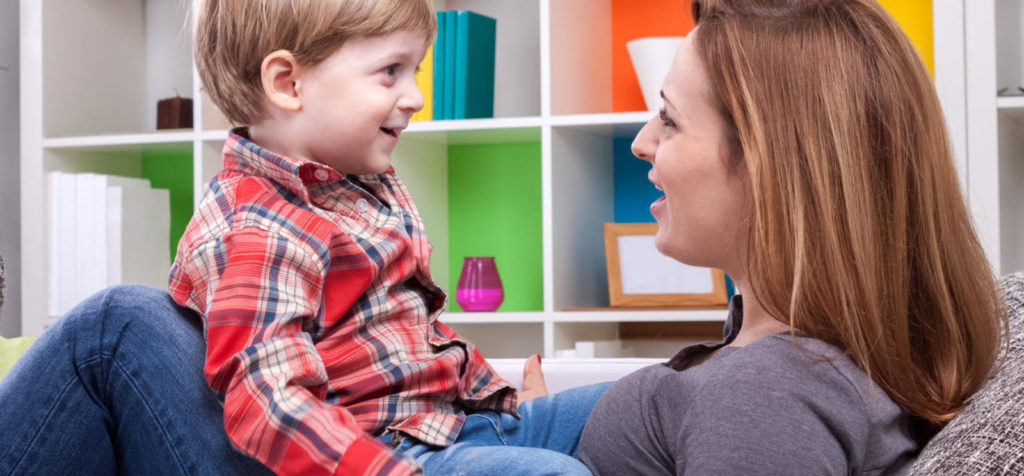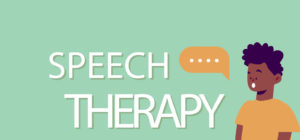As your child’s speech and language skills emerge in early childhood, you will play a critical role in his or her progress. While you may not realize it, there are many tips to promote speech and jumpstart your toddler’s language development during daily activities and routines.
Self-Talk & Parallel-Talk
What They Are
Self-talk is a strategy in which you narrate what you are doing, and when using the parallel-talk strategy, you narrate what your child is doing, to create a language-rich environment.
Why They Work
Self-talk and parallel-talk expose your child to a wide variety
of language across his or her day. A child must understand words and hear them used in context before he or she will begin to use those words.
How to Use Them
Narrate activities occurring around your child, as well as what you and your child are doing. Use short and simple sentences, not only to make it easier for your child to understand, but to also make it easier for him or her to pick out words he or she might imitate!
When to Use Them
Self-talk and parallel-talk can be incorporated in activities across your entire day.
Verbal Routines
What They Are
When using verbal routines you say the same routine-specific phrase each time you do a given daily routine. Eventually, you will pause and wait for your child to fill in the last word of the phrase.
Why They Work
Verbal routines repetitively expose your child to predictable language across his or her day. By using specific phrases every time you do a specific routine, your child will eventually anticipate your words and help you fill in the last word in the sequence if you pause and wait expectantly! He or she may even begin to use the whole phrase independently when you do the routine.
How to Use Them
Use familiar songs, nursery rhymes, or make up short phrases while completing daily routines. Every time you complete this activity with your child, say the phrase. When your child appears to recognize the verbal routine after hearing it many times, try leaving off the last word. Look at your child expectantly and see if he or she fills in the blank. If he or she doesn’t get it this time, fill in the blank, and try again next time!
When to Use Them
Use your verbal routines every time you complete a routine activity. This can include turning on and off lights, putting on and taking off socks and shoes, washing hands, getting in and out of the car, bedtime, pushing cars down a ramp, blowing bubbles, or other favorite play routines.
Communicative Temptations
What They Are
When using communicative temptations, you place motivating items out of reach from your child to elicit communication.
Why They Works
By setting up your child’s environment with highly desired items out of reach, you are creating motivating opportunities for your child to communicate.
How to Use Them
Find an item (e.g., a favorite toy) that is highly motivating for your child. Place the item up on a shelf out of reach, inside a container they cannot open, or use a toy that requires your help to make it work (e.g., bubbles, windup toys). Make sure your child sees the item (or give them the container or toy) and wait! Don’t anticipate your child’s needs by helping them right away. When your child communicates that he or she wants the item (by pointing, gesturing and, or vocalization) praise him or her by providing the item or helping with it. Repeat this sequence multiple times to give your child many opportunities to communicate.
When to Use Them
This can be used best during playtime and snack time.
Withholding
What It Is
When using the strategy of withholding, you wait for your child to request an item or action with a word before giving it to him or her.
Why It Works
Rather than anticipating your child’s needs, withholding creates more opportunities for your child to use his or her new words! This strategy targets words your child already has in his or her vocabulary to encourage more consistent usage.
How to Use It
When your child indicates he or she wants something by pointing to it or using other non-verbal communication, say to your child, “Use your words” or, “tell me”. Wait, and if your child does not respond, give a verbal model of the word (e.g., “Ball”) and avoid giving your child a command to say the word (e.g., “Say ball”). When your child verbally responds, give him or her the item.
When to Use It
This strategy can be used any time your child requests an item or action of a word he or she already has in his or her vocabulary.
Language Expansion
What It Is
When using language expansion, you take a word your child just said and repeat it back in a phrase adding one or two more words to it.
Why It Works
By adding one or two more words to your child’s utterance, you help promote word combinations by giving them a direct model for expanding his or her utterances.
How to Use It
After your child says a word or phrase, repeat the word or phrase back with one or two additional words. Vary the type of word(s) you add, such as an adjective, verb, pronoun, noun, or location.
When to Use It
Expansions can be used anytime your child uses a single word or phrase.




